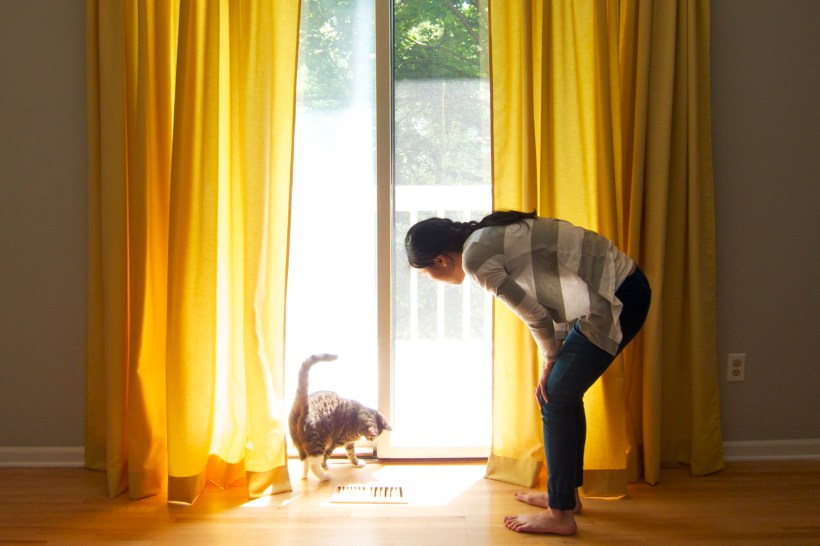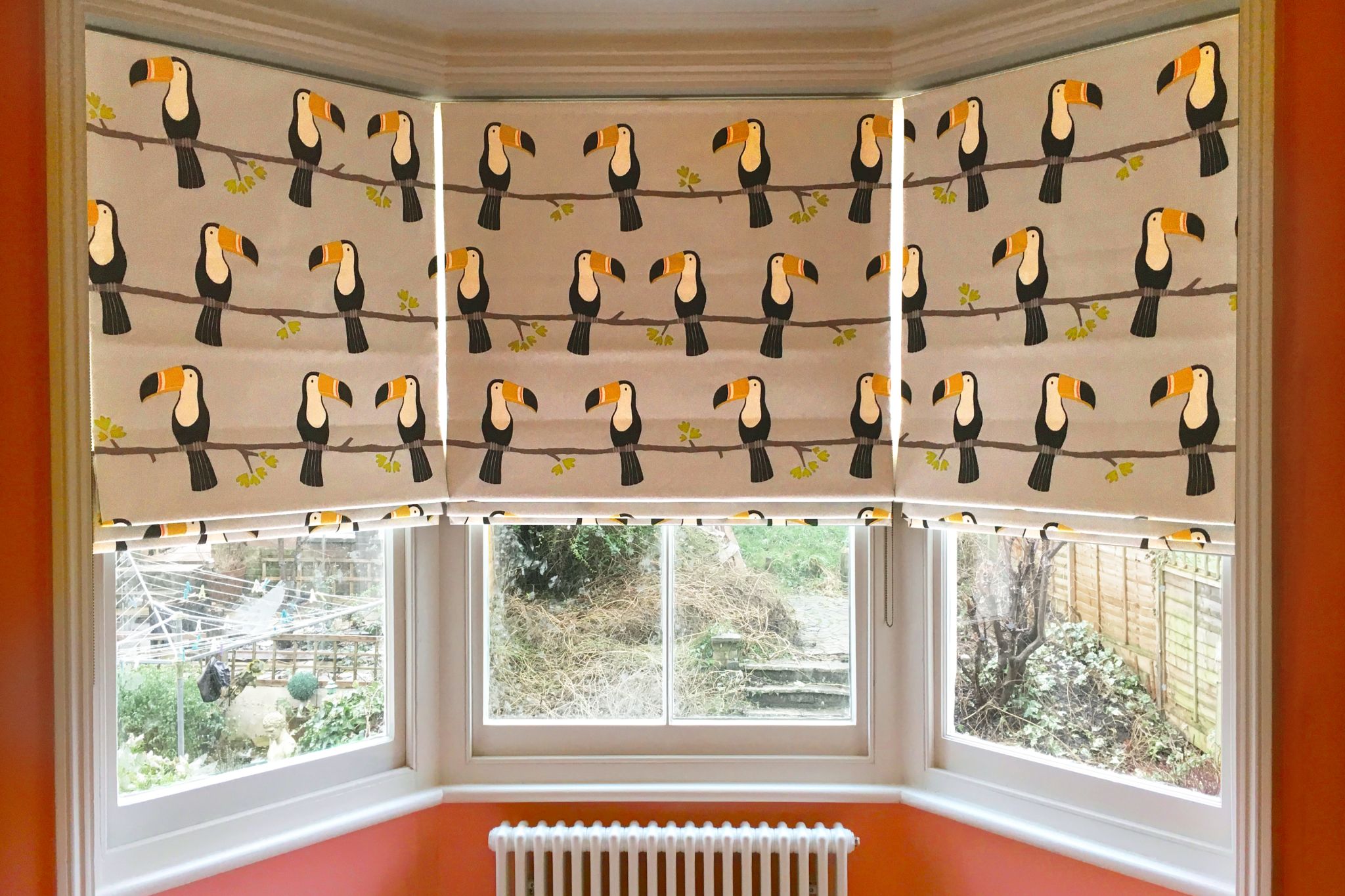Your drafty windows are costing you a bundle. Around 25% of your heating and cooling costs drift out of them annually. Sealing energy-robbing air leaks is your first step toward saving money. Adding the right window treatments afterward will further boost your home’s energy efficiency.
Weighing Your Window Treatment Options
The trick to picking the best window treatments for energy efficiency is to know which types will block the sun’s heat (solar heat gain) in the summer and slash heat loss in the winter. You’ll also need to know how to tap into each treatment’s energy-saving superpowers with proper installation. The following list will help you pick what’s best for your home.
Blinds

Energy-saving benefit: They can help you beat the summer heat.
How? By adjusting the slats to control the amount of light and ventilation you let into a room. Other good-to-knows:
- Blinds made of highly reflective materials can slash solar heat gain by 45% when completely lowered and closed, according to Energy.gov.
- Not all blinds are the same. To reduce solar heat gain, look for light-colored blinds that give you the most control over blocking sunlight. Light-colored blinds reflect rather than absorb heat.
Installation: For the most sunlight control, blinds must cover the entire width and height of the window opening and clear the sides of the window frame. The closer they are to the window, the better the efficiency.
Cost: Ranges from an average $35-$89 based on dimensions.
FYI: To reap the rewards of energy savings, adjust slats need to block or diffuse sunlight.
Curtains and Drapes

Energy-saving benefit: Some types can reduce heat gain during the summer and heat loss during the winter.
How? During the summer, opaque options with a white backing or lining can reduce heat gain by around 33%, according to Energy.gov. During the winter, the same type of curtain when closed can reduce heat loss in a warm room by up to 10%. Other good-to-knows:
On hot, sunny days, keep lined curtains closed on west-facing windows to help keep your home cool
During sunny winter days, keep your curtains open to boost solar heat gain; then close them at night to prevent heat loss.
Installation: You can reduce heat loss during the winter by up to 25% by placing your opaque curtains close to the window (an inch is best) and then sealing them. Here’s how:
- Let the curtains fall to the floor or windowsill to create a seal at the bottom.
- Add a cornice or place your curtains at the ceiling to seal the top.

- Attach the sides of the drapes to the wall with magnetic tape or Velcro to seal the sides.
- Overlap the curtain panels in the middle to seal the center.
Cost: A thermal-lined curtain panel that blocks both heat and cold averages $31. Don’t want to replace your existing curtains? You can boost their efficiency by adding a curtain liner that blocks both heat loss and heat gain. Prices are an average of about $20.
Shades
Energy-saving benefit: The ones listed here can be very effective energy savers in both summer and winter. So long as you keep them down.
How?
- Cellular shade fabric is constructed into honeycomb-shaped cells (see below) that boost insulation and UV protection. They’re typically available in three grades: single, double, and triple cells. Triple cell shades are usually the most energy efficient -- a good choice for climates that experience extreme temps. Plus, they block street noise.
- Honeycomb cellular shades as the window treatment in a room.
- Dual shade systems have a highly reflective side to reduce solar gain and a dark-colored side that absorbs heat on cold days. They're most effective if drawn all day.
- A basic Roman shade (see below) can reduce solar heat gain during the summer if it’s made out of fabric, such as 3M Scotchlite reflective material fabric, that reflects or blocks light when fully closed.

- Insulated Roman shades are ideal for retaining heat during the winter. They’re typically made of four or more layers of material including a decorative fabric that faces your room, a liner that faces your window, and a few layers of insulation fabric in the middle.
- You can DIY Roman shades using specialty “warm window fabric" available at most fabric and craft stores; it includes all the layers needed for an insulated Roman shade except the decorative fabric. Attaching the shade to your window’s trim using magnetic strips or Velcro is the last step to preventing heat loss. This video explains how it works:
Installation: When it comes to preventing heat loss, place shades about one inch from the window and seal them on all four sides. This prevents heat loss by keeping air trapped between the window and shade.
Cost:
- Cellular shades range from $68-$108.
- Roman shades range from $42-$113.
More Treatments Worth Considering

Insulated interior shutters are solid shutter doors with rigid foam insulation. When closed, they can completely reduce heat gain during the summer and heat loss during the winter. To optimize your energy savings, make sure they fit snugly against a window’s frame.
Cost: Interior shutters range from $20 to $700 per window.
Louvered shutters (see below) can be just as effective as blinds when it comes to reducing solar heat gain because the slats work like blinds.

Plantation shutters--window blinds with wide wooden louvers or slats--cost about $2,000, depending on the material and size.
Heat-controlled window film can reflect around 72% of the sun’s heat while keeping you and your home protected from damaging UV rays. Mirror-like films are usually better at beating the heat than more transparent types.
Cost: Film starts at around $37 per roll and goes up depending on the amount of light the window film can reflect.
Energy-Saving Bonus Tip
Layer window treatments to boost energy savings. A few examples:
- Combine blinds or louvered shutters with transparent heat-controlled window film or light-blocking curtains.
- Hang two separate layers of drapes in cold climates. The drapes facing your interior will boost your winter comfort because they’ll remain at room temperature. You can remove one layer in summer.
- Combine blinds with Roman shades. Use the blinds when you want natural light. Lower the Roman shades on top of closed blinds to boost energy efficiency.
Related: How to Fix Drafty Windows
